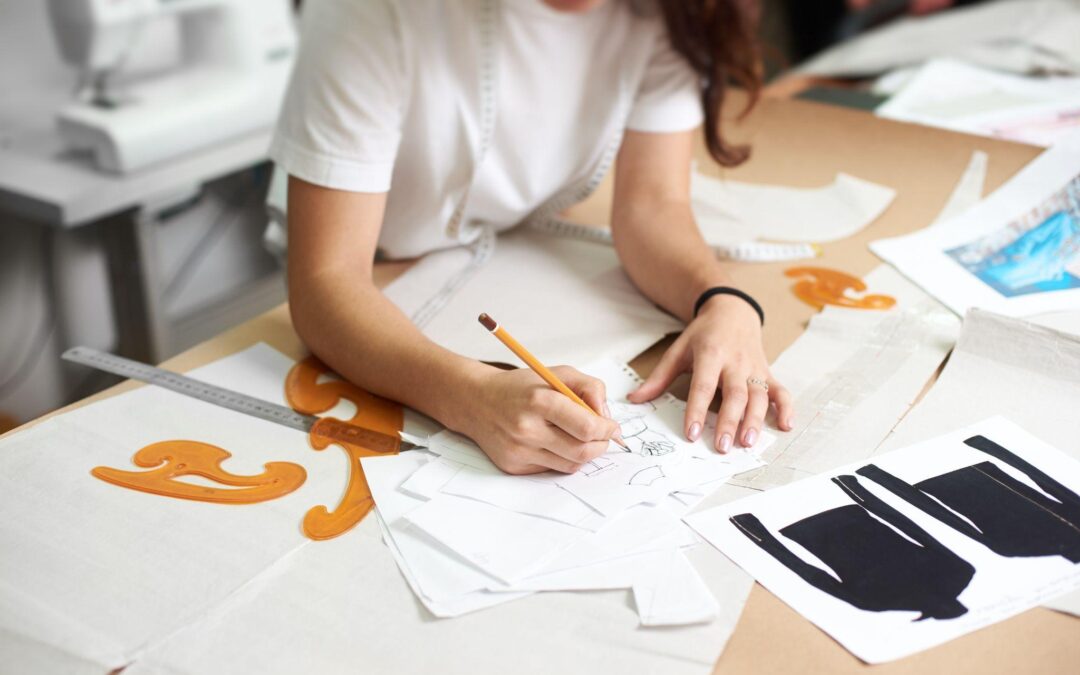
Crafting Iconic Designs: How Fashion Designers Can Harness the Power of Adobe Express
In the fast-paced world of fashion, staying ahead of trends and maintaining a distinct creative voice is essential. With the rise of digital tools, designers now have more resources than ever to bring their visions to life. Adobe Express, a versatile and user-friendly platform, offers fashion designers the perfect blend of creativity and efficiency. This powerful tool enables designers to create, edit, and share their work seamlessly, making it a game-changer in the industry. As the lines between fashion and technology continue to blur, Adobe Express stands out as an essential tool for designers looking to innovate and inspire.
Streamlining the Design Process
Fashion design is often a complex process, requiring meticulous attention to detail and a deep understanding of visual aesthetics. Adobe Express simplifies this process by offering a range of intuitive features that allow designers to create stunning visuals with ease. Whether it’s sketching initial concepts, refining designs, or creating mood boards, Adobe Express provides the tools needed to streamline these tasks. The platform’s ease of use means designers can focus more on their creativity and less on the technicalities. This efficiency not only saves time but also enhances the overall quality of the design work.
Enhancing Visual Communication
In fashion, visual communication is key. Designers must convey their ideas clearly and compellingly to clients, collaborators, and consumers. Adobe Express allows designers to create visually striking presentations that communicate their concepts effectively. The platform’s wide array of templates, fonts, and design elements make it easy to craft polished presentations that showcase a designer’s unique style. By using Adobe Express, designers can ensure that their visual communication is as impactful as their designs, leaving a lasting impression on their audience.
Creating Engaging Social Media Content
Social media has become an indispensable tool for fashion designers to showcase their work and connect with their audience. Adobe Express makes it easy to create eye-catching social media content that stands out in a crowded digital space. Designers can use the platform to design Instagram stories, promotional graphics, and even short videos that reflect their brand’s identity. With its user-friendly interface and vast library of assets, Adobe Express allows designers to maintain a consistent and professional online presence. This helps in building a strong brand image and engaging with a global audience.
Collaborating with Teams
Fashion design is often a collaborative effort, involving input from various stakeholders, including stylists, photographers, and marketers. Adobe Express facilitates this collaboration by allowing designers to share their work easily and get real-time feedback. The platform’s cloud-based system means that teams can work together seamlessly, regardless of their location. This level of collaboration ensures that everyone involved in the project is on the same page, leading to a more cohesive final product. Adobe Express, therefore, not only enhances the creative process but also fosters a more efficient and harmonious working environment.
Adapting to Market Trends
The fashion industry is constantly evolving, with trends changing rapidly. Adobe Express helps designers stay ahead of these trends by offering tools that allow for quick adjustments and updates to designs. Whether it’s tweaking a color scheme to match the latest runway trends or adapting a design for different markets, Adobe Express provides the flexibility needed to stay relevant. This adaptability is crucial for fashion designers who must constantly innovate to meet the demands of an ever-changing market. With Adobe Express, designers can easily keep their work fresh and aligned with current trends.
Expanding the Designer’s Toolkit
Adobe Express is more than just a design tool; it’s a gateway to a vast array of creative possibilities. The platform integrates seamlessly with other Adobe products, such as Photoshop and Illustrator, allowing designers to expand their toolkit and push their creativity further. This integration means that designers can easily transition from sketching a concept in Adobe Express to refining it in Photoshop or Illustrator. By offering such versatility, Adobe Express empowers designers to explore new creative avenues and produce work that is both innovative and visually stunning. This expansion of the designer’s toolkit is essential in an industry where originality is key.
As the fashion industry continues to embrace digital transformation, tools like Adobe Express are becoming indispensable for designers. The platform’s combination of ease of use, powerful features, and adaptability makes it an essential resource for modern fashion designers. By leveraging Adobe Express, designers can streamline their workflow, enhance their visual communication, and stay ahead of trends, all while expanding their creative possibilities. In this new era of fashion design, Adobe Express stands out as a tool that not only supports the creative process but also elevates it to new heights. The future of fashion is digital, and Adobe Express is leading the way.
You may also want to read:
How Fashion Designers and Other Creatives Can Get Noticed‘
How Much Do CLO3D Designers Make?
How Much Do Fashion Designers Make? Unveiling the Earnings of Creative Minds


